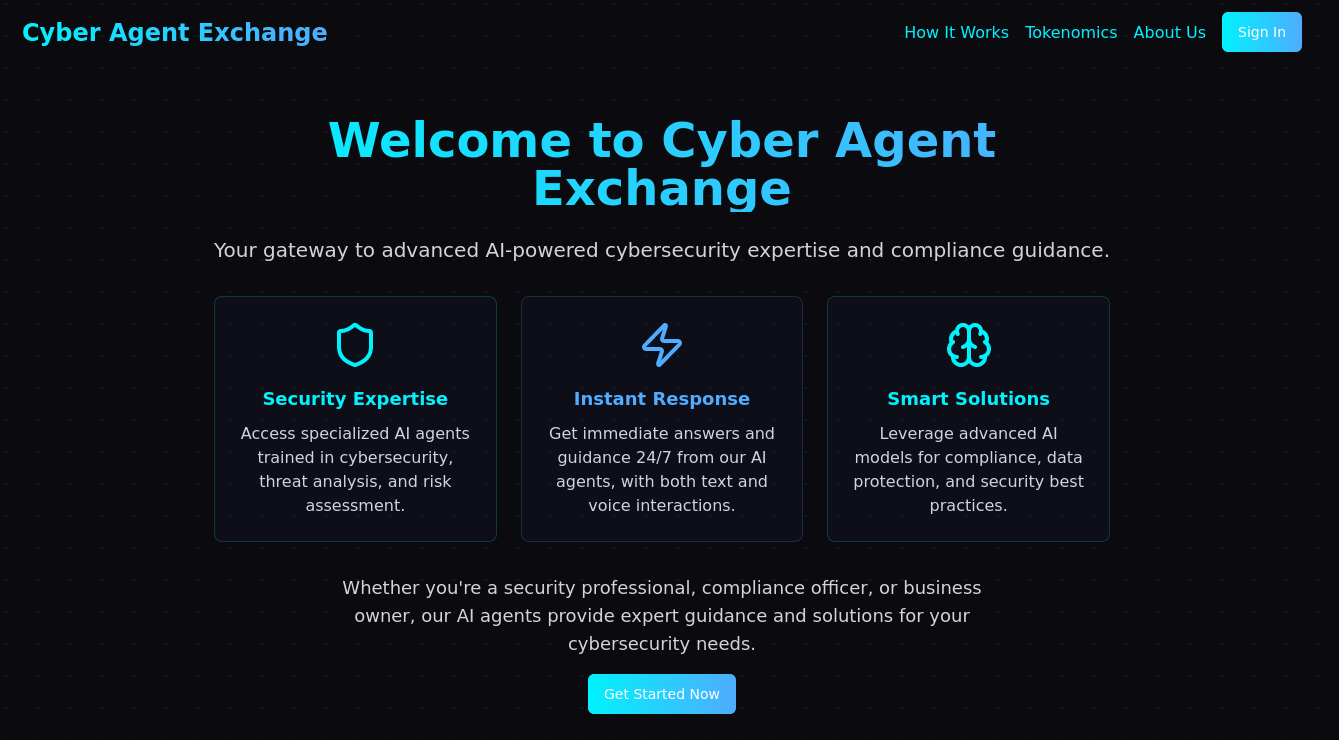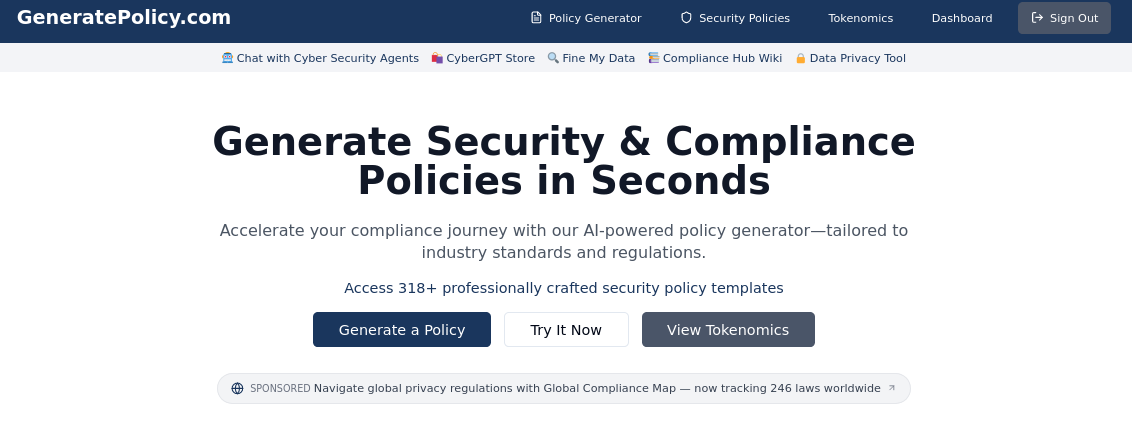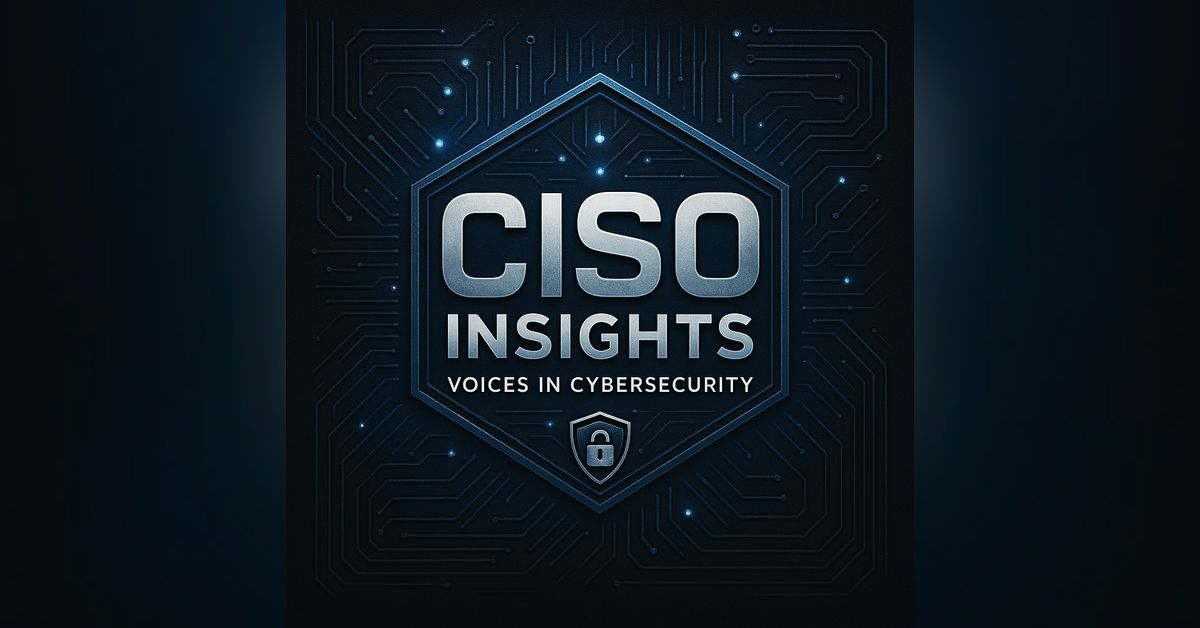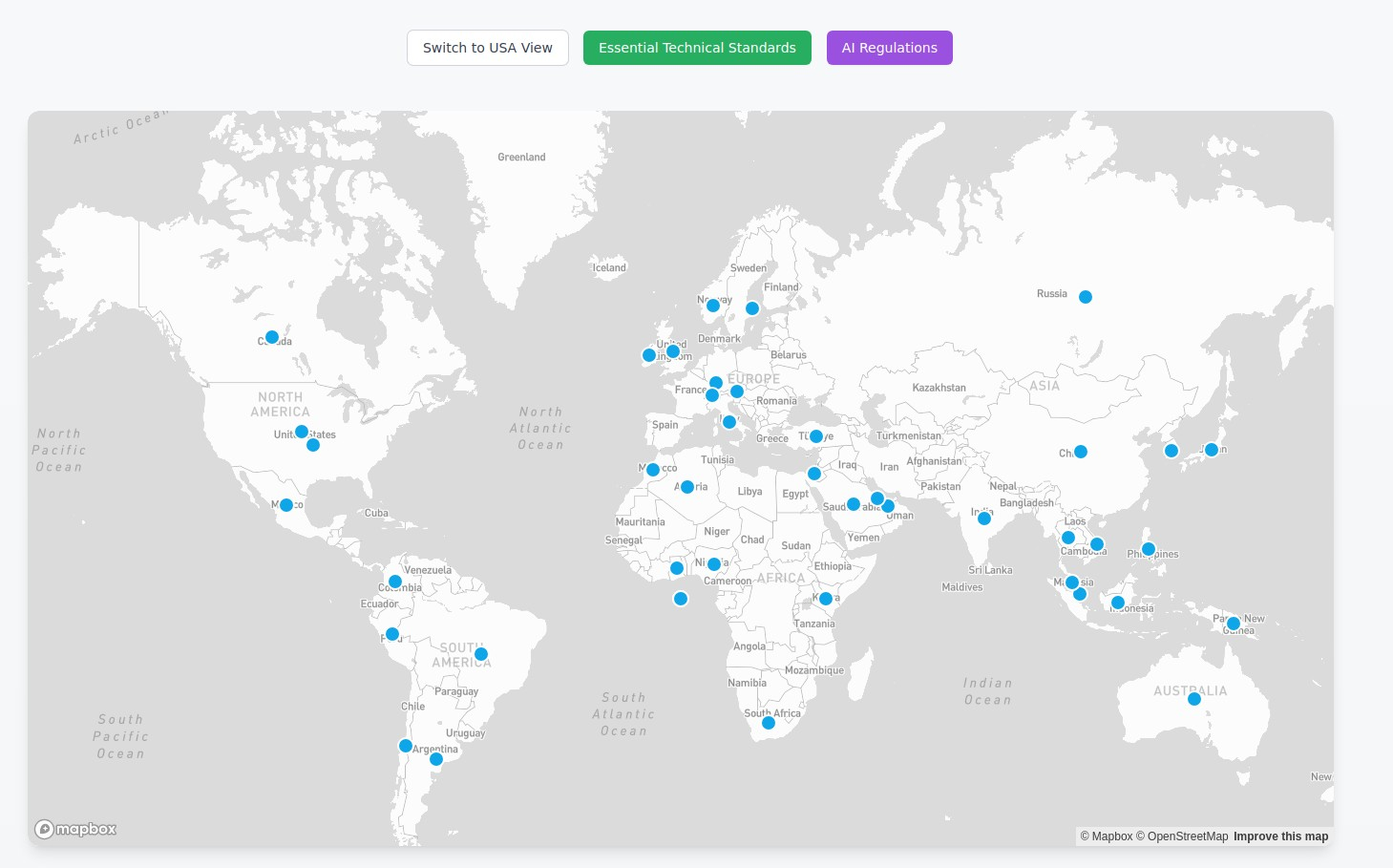The Complete Guide to CISO Compensation in 2025: Traditional, Virtual, and Fractional Models

Executive Summary
In today's increasingly complex digital landscape, the role of the Chief Information Security Officer (CISO) has become mission-critical for organizations of all sizes. With cybersecurity threats evolving at unprecedented rates, companies are investing heavily in security leadership—but with varying approaches based on their specific needs and resources. This comprehensive guide explores the current state of CISO compensation across different models (traditional, virtual, and fractional), providing valuable insights for both aspiring security leaders and organizations looking to hire them.
Table of Contents
- Introduction: The Evolving CISO Landscape
- Traditional CISO Compensation
- Deputy CISO Compensation
- Virtual CISO (vCISO) Compensation
- Fractional CISO Compensation
- Comparing Models: Traditional vs. vCISO vs. Fractional
- Future Trends in CISO Compensation
- Strategic Considerations for Organizations
- Career Development for Aspiring CISOs
- Conclusion

Introduction: The Evolving CISO Landscape
The Chief Information Security Officer (CISO) role has undergone significant evolution in recent years, transitioning from a primarily technical position to a strategic leadership role with increasing board visibility. As cyber threats become more sophisticated and regulatory requirements more stringent, organizations across all sectors are recognizing the critical importance of strong security leadership.
In 2025, companies have multiple options for fulfilling the CISO function:
- Traditional CISO: A full-time executive position with comprehensive responsibility for an organization's security strategy and operations
- Deputy CISO: A senior security leader who supports the CISO and often focuses on operational aspects of security
- Virtual CISO (vCISO): An outsourced security leader who provides services on a contract basis, typically part-time and remotely
- Fractional CISO: Similar to a vCISO but often working on-site for a set fraction of time (e.g., 1-2 days per week)
Each model comes with different compensation structures, benefits, and considerations that organizations must evaluate based on their specific needs, size, industry, and budget.

Traditional CISO Compensation
Salary Ranges and Trends
The compensation for traditional, full-time CISOs has seen substantial growth in recent years, reflecting the increasing importance and complexity of the role. Based on current data from multiple authoritative sources, CISO salaries in 2025 show significant variance:
According to Salary.com, the average annual salary for a Chief Information Security Officer in the United States is $240,759, with a range from $205,488 to $291,812. This represents continued growth from previous years as organizations prioritize cybersecurity leadership.
Other sources provide different figures, highlighting the variability in CISO compensation:
PayScale reports a somewhat lower average of $178,231 for a CISO in 2025.
Comparably indicates an average CISO salary of $238,107 in the US, with San Jose, California-based CISOs earning substantially more at $470,115—nearly double the national average.
Some industry reports suggest that the median salary for top CISOs has risen significantly, with figures as high as $584,000 reported in 2025, representing a 23% increase since 2020 and a 15% increase from the previous year.
These variations reflect differences in research methodologies, sample populations, and definitions of the CISO role. What's clear across all sources is that CISO compensation has been on an upward trajectory and remains highly competitive.

Geographic Variations
Location significantly impacts CISO compensation, with major technology hubs and financial centers typically offering the highest salaries:
In California, the average CISO salary is $265,557, while New York, NY offers $279,016, and Boston, MA provides $268,519.
In Florida, the average CISO salary reaches $323,501, with a wide range between $235,151 and $433,265.
These geographic variations reflect differences in:
- Cost of living
- Concentration of industries requiring advanced security expertise
- Competition for talent in technology hubs
- Regional risk profiles and regulatory environments
Industry Differences
Industry sector plays a crucial role in determining CISO compensation levels:
CISOs in large multinational corporations typically command the highest salaries, ranging from $200,000 to over $500,000 annually, with additional perks often including bonuses, stock options, and comprehensive benefits packages.
The financial services sector, technology companies, healthcare organizations, and regulated industries tend to offer the highest compensation due to:
- Heightened security risks and large attack surfaces
- Stringent regulatory requirements
- Significant potential costs of security breaches
- Complex technical environments
By contrast, education, non-profits, and government sectors typically offer lower compensation packages, though these have been increasing as security concerns grow across all sectors.

Experience and Certification Impact
Professional experience and certifications continue to be significant factors in CISO compensation:
Experience level has a direct correlation with CISO salaries, with beginners (1-5 years experience) earning around $180,408 annually, intermediate professionals (7-9 years) earning approximately $230,080, and advanced security leaders (20+ years) commanding up to $298,584.
Certifications that positively impact CISO compensation include:
- CISSP (Certified Information Systems Security Professional)
- CISM (Certified Information Security Manager)
- CISA (Certified Information Systems Auditor)
- CRISC (Certified in Risk and Information Systems Control)
- C-CISO (Certified CISO)
Total Compensation Packages
The base salary is only one component of a CISO's total compensation package. Additional elements include:
- Performance bonuses: Often 15-30% of base salary
- Stock options and equity grants: Particularly common in technology companies and startups
- Benefits packages: Including retirement plans, healthcare, and other perks
- Strategic incentives: Tied to security program maturity and risk reduction metrics
When considering total compensation, many CISOs earn significantly more than their base salaries would suggest, with total packages potentially increasing the figure by 25-40%.

Deputy CISO Compensation
Salary Ranges and Career Path
The Deputy CISO role serves as both a critical support position for the CISO and a potential stepping stone to the top security leadership position. Compensation for Deputy CISOs reflects this important but secondary status:
According to Glassdoor, the average salary for a Deputy CISO is $258,114 per year in the United States, with a base salary of $178,984 and additional pay averaging $79,131. The total compensation range typically falls between $194,000 and $350,000.
ZipRecruiter reports a lower average of $99,338 annually for Deputy CISOs, with a wide range between $66,500 (25th percentile) and $128,500 (75th percentile), and top earners (90th percentile) making $166,500.
This significant variation likely reflects differences in:
- Organization size and complexity
- Scope of responsibilities
- Industries and geographic locations
- Reporting relationship to the CISO

Relationship to CISO Compensation
The Deputy CISO position typically serves as a training ground for future CISOs, with compensation reflecting this career progression path:
In the most basic form, a Deputy CISO functions similar to a chief of staff, helping run point on various projects. Sometimes they handle project management, sometimes they do the actual security work, and in some organizations, they perform virtually all the security work while the CISO serves as the figurehead and public/board-facing persona.
Deputy CISOs typically earn 65-80% of what their CISO counterparts make, with the gap narrowing as they gain experience and responsibilities. This position offers valuable exposure to strategic and board-level interactions while building the technical and leadership skills necessary for advancement.

Virtual CISO (vCISO) Compensation
The virtual CISO model has gained significant traction in recent years, particularly among small to mid-sized organizations that need CISO-level expertise but cannot justify the expense of a full-time executive. vCISO compensation follows several distinct models:
Hourly Rate Model
Typical hourly rates for vCISO services fall between $200 and $500 per hour, depending on factors such as the provider's experience, expertise, and the complexity of the client's security needs.
According to one industry provider (PurpleSec), hourly rates for their vCISO services range from $200 to $250 per hour.
This model works well for organizations that:
- Need occasional expert input
- Want to address specific security tasks without long-term commitment
- Have internal resources that need expert guidance
- Are dealing with time-limited security challenges

Retainer Model
The monthly retainer approach provides ongoing access to vCISO services:
Monthly retainer fees typically range from $5,000 to $20,000 per month, depending on the level of service and the vCISO's involvement. Some providers offer tiered services, with basic tiers starting around $2,500 per month for essential advisory services.
Sample retainer costs from industry provider PurpleSec range from $1,600 to $20,000 per month.
In the UK market, typical retainer fees range from £3,000 to £6,000 per month for vCISO services.
One provider reports that 90% of their vCISO clients fall between $4,500 to $12,500 per month for vCISO and Virtual Security Team Services.
The retainer model is beneficial for businesses that need:
- Continuous access to security leadership
- Ongoing direction and hands-on management of information security programs
- Regular security updates and guidance
- Consistent board reporting and stakeholder communication
Project-Based Model
For specific security initiatives, the project-based approach offers defined deliverables and timelines:
Project-based vCISO pricing ranges from $10,000 (for services like gap & risk assessments) to $50,000 (for more complex needs like penetration testing and compliance certifications).
For a standard 40-hour project, costs typically range from $8,000 to $10,000.
This model works well for:
- Specific compliance initiatives (e.g., SOC 2, ISO 27001, HIPAA)
- Security program development or maturity assessments
- Security strategy development
- Technology evaluations and implementation oversight
Equity Model
Some vCISO providers, particularly those working with startups and early-stage companies, may accept equity as part or all of their compensation:
Some vCISO arrangements operate on an equity model, where compensation varies based on company share prices or available equity.
This approach aligns the vCISO's incentives with the company's success and can be attractive for:
- Startups with limited cash but significant growth potential
- Companies looking for longer-term security leadership commitment
- Organizations where security is central to business success and valuation

Fractional CISO Compensation
Comparison to vCISO Models
While often used interchangeably with vCISO, the term "Fractional CISO" typically refers to a more structured time commitment—often on-site—for a defined fraction of a full-time position:
Many security professionals prefer the term "Fractional CISO" because it more clearly defines the nature of the role: just like fractional CFO, CTO, and CMO positions, it implies a part-time CISO without the liability/responsibility of a full-time position.
Fractional CISOs typically work with fewer client organizations simultaneously compared to vCISOs and may have deeper engagement with each client:
Fractional CISOs are individual practitioners that may have been CISOs, Deputy CISOs, or other types of security leaders who work with a handful of companies at a time. They typically dedicate 25-75% of their time to each client, depending on the work required.
Cost-Benefit Analysis
The fractional model offers several financial advantages compared to both traditional and vCISO approaches:
According to one industry source, the estimated average total compensation for a CISO in the United States as of April 2024 was $387,075. Fractional CISO services offer a cost-effective alternative, providing top-notch security expertise without breaking the bank.
CISO-as-a-Service and vCISO pricing typically ranges between $25,000 and $200,000 annually, depending on scope, current state, and other needs. The cost tends to decrease over time as security programs mature and the focus shifts to maintenance.
The core value proposition of the fractional model lies in accessing executive-level security leadership at a fraction of the cost of a full-time hire while maintaining more consistent engagement than typical vCISO arrangements.

Comparing Models: Traditional vs. vCISO vs. Fractional
Cost Comparison
When comparing the three primary CISO models, the cost differences are substantial:
Traditional CISO:
- Base salary: $180,000-$500,000+ annually
- Total compensation (with benefits, bonuses, equity): $225,000-$650,000+ annually
- Additional overhead costs (office, equipment, training): $30,000-$75,000 annually
- Recruitment and onboarding costs: $50,000-$150,000 (one-time)
Fractional CISO:
- Annual cost: $50,000-$200,000 (depending on time commitment)
- No benefits, bonuses, or additional overhead costs
- Minimal recruitment costs
Virtual CISO:
- Annual cost: $25,000-$150,000 (depending on service level)
- No benefits, bonuses, or additional overhead costs
- Minimal recruitment costs
A virtual CISO offers several advantages over traditional models, including cost efficiency (paying only for needed services), flexibility (scaling services based on requirements), and expertise (access to top-tier talent without long-term commitments).
According to RSI Security, vCISO services can cost as little as 30% of the salary paid to a traditional CISO.

Value Analysis
While cost savings are significant, organizations must consider the value proposition of each model:
Traditional CISO Advantages:
- Full-time dedication to the organization's security needs
- Deep integration with the executive team and culture
- Consistent presence for employees and stakeholders
- Career investment in the organization's success
- Direct management of security teams
Fractional CISO Advantages:
- Significant cost savings over traditional model
- More personal attention than typical vCISO arrangements
- Experience across multiple organizations and industries
- Potential for on-site presence on a regular schedule
- Ability to scale commitment as needs change
Virtual CISO Advantages:
- Maximum cost efficiency
- Access to specialized expertise for specific needs
- Often supported by broader security firm resources
- Flexibility to change providers if needed
- No long-term commitment required

Board Access and Reporting Structures
One crucial consideration when comparing models is the relationship with executive leadership and board access:
Virtual CISOs can provide cybersecurity input to the board of directors, similar to how a full-time CISO would.
Depending on the organization's size, a vCISO security leader may report to a Chief Information Officer (CIO) or directly to a Chief Executive Officer (CEO).
For many organizations, particularly those in regulated industries or those handling sensitive data, board-level security reporting is essential. All three models can provide this capability, but with different approaches:
- Traditional CISOs typically have established board relationships and regular reporting cadences
- Fractional CISOs often include board presentations and reporting as part of their core services
- Virtual CISOs may provide board reports but might lack the personal relationships and organizational context that come with more consistent engagement
When to Choose Each Model
Organizations should consider these factors when selecting the appropriate CISO model:
Traditional CISO is ideal for:
- Large enterprises with complex security needs
- Highly regulated industries requiring dedicated security leadership
- Organizations with significant security teams requiring management
- Companies where security is a core business function or competitive differentiator
- Organizations with the budget to support a full executive position
Fractional CISO works best for:
- Mid-sized organizations with moderate security complexity
- Companies needing regular on-site security leadership
- Organizations requiring deeper engagement with security initiatives
- Businesses wanting to build toward a full-time CISO position
- Companies seeking consistent security leadership at a reduced cost
Virtual CISO is optimal for:
- Small to mid-sized organizations with basic security needs
- Startups and growing companies with limited budgets
- Organizations requiring specialized security expertise for specific projects
- Companies with strong internal IT teams needing strategic security guidance
- Businesses in early security program development stages

Future Trends in CISO Compensation
Several trends are likely to shape CISO compensation across all models in the coming years:
- Increasing specialization: Security leaders with expertise in emerging areas like AI security, cloud security, and supply chain security will command premium compensation.
- Regulatory influence: As new security regulations emerge globally, experienced CISOs familiar with compliance requirements will see compensation increases.
- Industry convergence: The gap between CISO compensation in traditionally high-paying sectors and other industries will narrow as security becomes universally critical.
- Outcome-based compensation: More organizations will tie CISO compensation to specific security outcomes and risk reduction metrics rather than solely to market rates.
- Hybrid models: We'll likely see more organizations adopting hybrid approaches that combine elements of traditional, fractional, and virtual CISO models to optimize both expertise and cost.

Strategic Considerations for Organizations
When evaluating CISO options and compensation structures, organizations should consider:
- Security program maturity: Early-stage security programs may benefit from intensive fractional or virtual CISO guidance, while mature programs might require full-time leadership.
- Budget constraints vs. security needs: Organizations must balance financial limitations against security requirements, recognizing that inadequate security leadership can lead to costly breaches.
- Internal capabilities: The strength of existing security teams influences the level of leadership required.
- Regulatory requirements: Some regulations may effectively mandate dedicated security leadership.
- Long-term strategy: Organizations should consider whether their chosen CISO model aligns with long-term security maturity goals.
Career Development for Aspiring CISOs
For professionals aspiring to CISO roles, the diversification of CISO models creates multiple career paths:
- Traditional path: Rising through security roles to reach Deputy CISO and eventually CISO positions
- Consulting path: Building expertise through consulting firms before moving to in-house CISO roles
- Fractional/virtual path: Leveraging senior security experience to provide leadership across multiple organizations
- Specialization path: Developing deep expertise in high-demand security domains before broadening into CISO roles
Key recommendations for aspiring CISOs include:
- Pursue relevant certifications (CISSP, CISM, etc.)
- Gain experience across multiple security domains
- Develop business and communication skills
- Build experience with board and executive interactions
- Consider Deputy CISO roles as valuable stepping stones
- Explore fractional or virtual opportunities to gain experience with multiple security programs

Conclusion
The CISO role continues to evolve in importance, scope, and compensation as cybersecurity becomes increasingly central to organizational success. While traditional CISO roles command substantial compensation packages, the emergence of fractional and virtual CISO models has created more accessible options for organizations of all sizes.
For companies seeking security leadership, the choice between traditional, fractional, and virtual CISO models should be based on a careful assessment of security needs, organizational structure, budget constraints, and long-term objectives. Each model offers distinct advantages and limitations that must be weighed against specific organizational contexts.
For security professionals, the diversification of CISO roles creates new career opportunities and paths to security leadership. By understanding the compensation trends and expectations across different CISO models, security professionals can strategically position themselves for career advancement in this critical and growing field.
As cybersecurity threats continue to evolve and regulatory requirements expand, the demand for skilled security leadership will only increase—ensuring that qualified CISOs across all models will remain in high demand with competitive compensation for the foreseeable future.




















